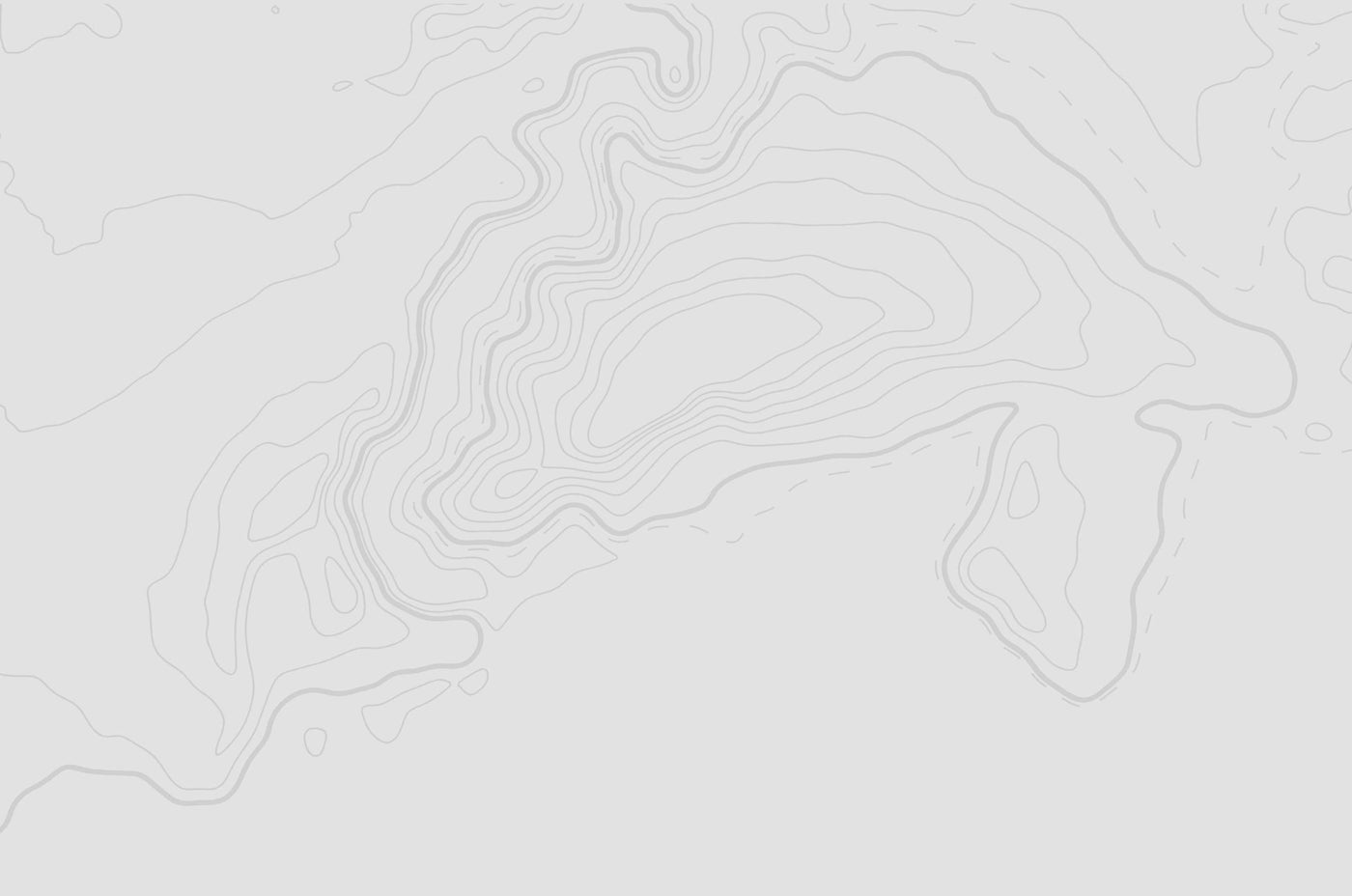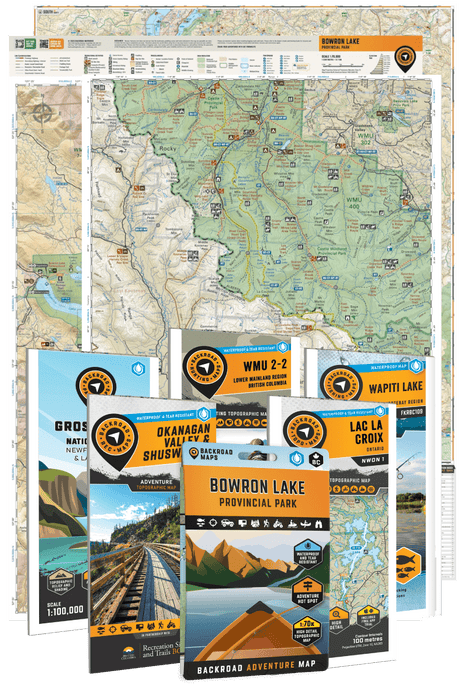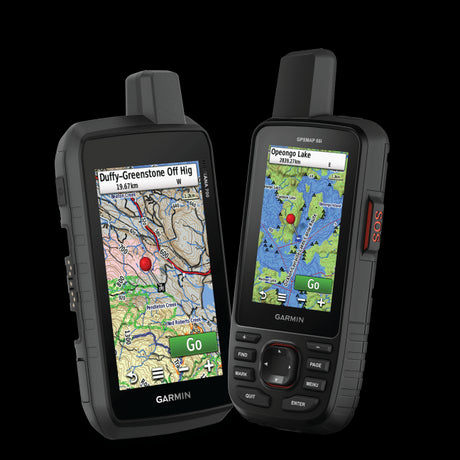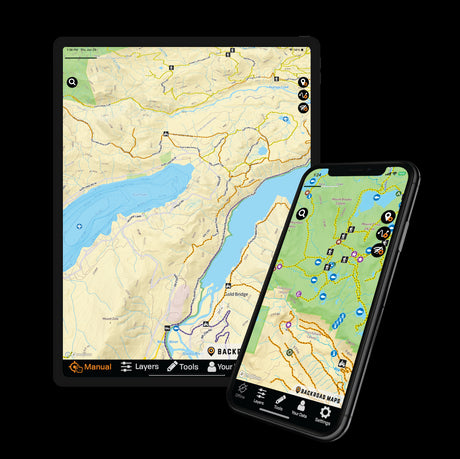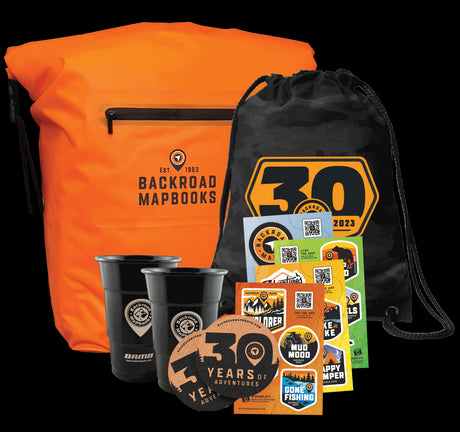To the surprise of many, the rugged landscape of Northeastern Ontario has some of our favourite paddling routes in all of Canada. Spotted with many lakes and strewn with exciting, fast-flowing rivers, the area offers many options for any level of paddler, from easy-to-access day trips to challenging multi-day adventures.
While the challenges can be daunting, those who paddle in Northeastern Ontario know the rewards outweigh the toil. Pristine water, fantastic fishing, outstanding scenery, endless wildlife, and the chance to sleep with the Northern Lights dancing above your head. Below are a few of our choices for those looking to discover the great paddling in Northeastern Ontario for the first time, or veterans looking for some new destinations.

Anima Nipissing/Lady Evelyn Lake Loop
Found in the Temagami Region, one of the paddling jewels of Ontario, this relatively easy week-long excursion spans a total distance of 118 kilometres (73 miles). The loop involves seven portages, including one of 2,706 metres (8,880 feet) for a total of 7,000 metres (22,965 feet) of portaging. Commencing at the Mowat Landing Access Point on the Montreal River, the route heads south down the Montreal River to Bay Lake and Anima Nipissing Lake. The loop continues through Red Squirrel Lake to Lake Temagami, where visitors can climb up Mount Ferguson and visit the old logging “jackladder” on Diamond Lake.
Blueberry Lake Route
Blueberry Lake route is another great trip in the Temagami region that is relatively easy. This 14 kilometre (8.7 mile) outing travels through Cassels Lake, where there is a put-in at the public dock, and into Blueberry Lake via a 400 metre (1,310 foot) portage. Most folks who paddle here use Blueberry Lake as a base camp to explore the hiking trails and old-growth forests in the White Bear Forest; the most popular trail being the Old Growth Trail, which can only be reached by water. There are two wilderness campsites on Blueberry Lake: one is located on the northern shore of the lake, and the other on the eastern shore.
Dog River to Lake Superior Route
This advanced route is for experienced whitewater paddlers only. It drops almost 200 metres (650 feet) in elevation over 37 kilometres (22 miles), with more than 60 marked rapids and continuous stretches of Class III-V features. This remote Grade II+ section of the river flows for 65 kilometres (40 miles) from the put-in at the old bridge crossing at Paint Lake Road west of Magpie Mine to the mouth of the river at Lake Superior. The Dog River is a true whitewater river that requires careful judgment and scouting.
Esker Lakes Provincial Park
This trip is an out-and-back trek that takes about half a day in each direction to complete. Being an easy paddle out, there is an option to pitch a tent at the campsite at the end of Lulu Lake. Camping at the Provincial Park is also an option if you want to do a day trip. The trip begins on Panagapka Lake at the park visitor centre and visits Lallan, Ramey, Gourlay, and Lulu Lakes over a total distance of 15 kilometres (9.3 miles). The lakes are separated by short portages, making this an ideal trip for the beginner paddler.

French River Route
A very popular Northeastern Ontario canoe destination, this historical 77 kilometre (48 mile) journey contains some Class III rapids and takes about five to seven days to complete. There is parking and a boat launch at Dokis Bay, but to avoid the first portage, you can begin at the Chaudiere Dam to the southwest. Interesting sites include the stone cross at Crooked Rapids, Lost Child Bend and Recollet Falls. From the Highway 69 junction, the route continues to the shores of Georgian Bay. Those who do not wish to paddle the entire river will find thirteen access points along its route. In non-flood conditions, you can paddle the river in both directions, but during flooding, the river can be as much as 4 metres (13 feet) higher than at low flow, and there will be no passable portage at Recollet Falls in the French River Gorge.

Killarney Provincial Park
With crystal-clear lakes and spectacular pink mountains, Killarney Provincial Park has long been a favourite paddling destination in the area. But with this, it can be a challenge to reserve campsites due to their popularity.
The main access road is Highway 637 where you will find the George Lake Campground. Other canoe access points include Bell Lake, Carlyle Lake, Charlton Lake and Johnnie Lake. The makeup of the park enables visitors to explore short, two-day routes like the 23 kilometre (14 mile) Killarney Lake Loop, or extended trips like the over 100 kilometre (62 mile) Northern Boundary Loop with a gruelling 2,945 metre (9,660 foot) portage. Those looking for seclusion can explore the 49 kilometre (30 mile) Nellie Lake Loop which begins from Charlton Lake off Highway 68. However, one of the most popular routes in the park is the 45 kilometre (28 mile) Threenarrows Lake Loop which leaves from the George Lake access point and visits Freeland, Killarney and O.S.A. Lakes along the way. Camping is only permitted at designated campsites by reservation through Ontario Parks (ontarioparks.com).

Lake Superior
The go-to paddling destination for canoe legend Bill Mason, Lake Superior offers incredible paddling if you are comfortable with cold water, fog, and cliffs that stretch for miles. Your reward is some of the most scenic paddling in the province. Experienced, long-distance paddlers can take on the eight to fourteen day paddle between Hattie Cove and Michipicoten Harbour within Pukaskwa National Park. There are also many single-day or weekend trip options to explore. Weather can change quickly and take-out points are often limited, so plan accordingly.

Lake Superior Provincial Park Routes
Another of Ontario’s signature provincial parks, Lake Superior Provincial Park displays stunning scenery and a rugged topography of the land, creating an unforgettable trip for the more advanced paddlers. A trip through these waters rewards paddlers with a feeling of solidarity and discovery, with less traffic than the surrounding routes in the area. Empty campsites are common in this provincial park, but steep portages require trekkers to have good physical conditioning to successfully complete.
If you are looking for an easy half-day trip, the 3 kilometre (1.9 mile) Crescent Lake Route would be ideal. Another easier trip would be the 16 kilometre (10 mile) Fenton Treeby Route, offering a longer distance that could turn into an overnighter if you prefer, or Mijinemungshing Lake, the largest inland lake in the park that requires no portaging and makes a great day paddle or overnight trip for those wishing to spend a night or two.
More challenging routes include the Lower Agawa River Route, the Old Woman Lake Route, and the Sand River Canoe Route (which has 29 portages). These routes are strenuous and we advise proper planning and preparation before starting. Visit ontarioparks.com to book your interior trip and reserve camping spots.

Lake Temagami/Diamond/Obadika Loop
Another option in the paddling mecca of Temagami is this 85 kilometre (53 mile) loop that begins at the end of the Lake Temagami Access Road. The trip heads north through Diamond Lake before heading south again through Obadika Lake and back to the start. There are approximately 1,900 metres (6,235 feet) of portages, and the trip takes five to six days – or a week with rain delays. A highlight along the route, just south of New Liskeard, is a rock outcropping known as Devil’s Rock. While great to see from below, it is worth beaching the canoe and hiking to the top.

Missinaibi River Route
The Missinaibi is one of northern Ontario’s signature paddles. While much of the river is Grade I and II, there are several significant waterfalls and rapids along the way, including Thunder House Falls and Hell’s Gate Rapids. At Portage Island, the Missinaibi and the Mattagami join to form the Moose River. It is possible to take out at the Moose River Crossing or continue down to Moosonee. The trip is 556 kilometres (345 miles) from Missinaibi Lake to the Moose River Crossing and will take about three weeks to complete. It is 236 kilometres (147 miles) between Missinaibi Lake and Mattice, where the Trans-Canada Highway (Highway 11) crosses the river. Throughout this route, there are twenty-eight portages totalling over 8 kilometres (5 miles), with the longest being 2,650 metres (8,695 feet). There are a few places to access the river, however, north of Mattice, the river is basically inaccessible by land. Plan accordingly!

Montreal River Route
Connecting Gowganda and Matachewan, this scenic easy-to-moderate route starts on Edith Lake off Highway 560. Paddlers will find eight portages totalling 2,272 metres (7,455 feet) over the 64 kilometre (40 mile) route. Old trenches dug by prospectors in search of silver can still be seen along the portages, as well as old log chutes and dams from the early 1900s. This route takes in the Montreal River, East Beaver Lake, Crotch Lake, Tommy Lake and Sisseney Lake before reaching Matachewan.

Pic River Route
This trek takes paddlers back into the past as it travels through challenging rapids and past glorious waterfalls along a path once used by voyageurs. The 210 kilometre (130 mile) route will take intermediate paddlers about a week to complete, with ten portages along the way totalling 2,905 metres (9,530 feet). The put-in is found on McKay Lake south of Longlac and Highway 11. The river eventually spills out to Lake Superior south of Marathon, with few access points in between.
Porcupine River Route
A great option for new paddlers, this route can be accessed north of Highway 101, off Florence Street in Timmins. The easy, 15 kilometre (9 mile) day trip concludes on Porcupine Lake to the east. In addition to excellent wildlife viewing opportunities, there are several mining sites to look for – prospectors used the river in the early 1900s as they made their way to Nighthawk Lake in search of gold. The Kidd Creek Metallurgical Site still exists, and a gravesite is located past the large culvert bridge on the north shore of Porcupine Lake.
Spanish River Route
This easily accessible, 142 kilometre (89 mile) canoe route through a semi-remote Canadian Shield environment takes about four to six days and is not heavily travelled. There are Class I-V rapids along the route but the eleven portages totalling almost 3.4 kilometres (2.1 miles) allow you to avoid whitewater sections. The put-in sits north of Cartier, at the end of Duke Lake Road off Highway 144. The take-out is at Agnew Lake Lodge northwest of Espanola and Highway 17. For a fee, lodge attendants will shuttle you to the access and provide parking for your vehicles.
Upper Lady Evelyn/Smoothwater Lake Loop
Another fantastic Temagami route, this 87 kilometre (54 mile) loop route is best suited for spring travel, taking seven to nine days to complete. There are 20 portages totalling over 3.6 kilometres (2.2 miles). The put-in is on the north shore of Isabel (Beauty) Lake where canoeists head south to Paddle, Carmen, and Kaa Lakes until the Elizabeth Falls. From Gamble Lake, the long portage towards Smoothwater Lake is one of the toughest in the area. The reward is Sunnywater Lake, with water so clear that bright objects can be seen at a depth of 24 metres (80 feet)! Passing through a small gorge, you will reach Smoothwater Lake, where there are sandy beaches, great swimming spots, and nice campsites. The next leg of the journey crosses Apex Lake, Whitemud Lake, and Duff Lake. From here, travel to the Lady Evelyn River and back to the put-in on Isabel Lake.

Whether you have been paddling for decades or just starting, Northeastern Ontario has no shortage of beautiful paddling trips to choose from. If you are eager to learn more about what this area has to offer, pick up our new 6th Edition Northeastern Ontario Mapbook or download the BRMB Maps app and web map to access route information and essential trip details, including other backroad attractions, trails, parks, fishing and more!
Safe paddling!

